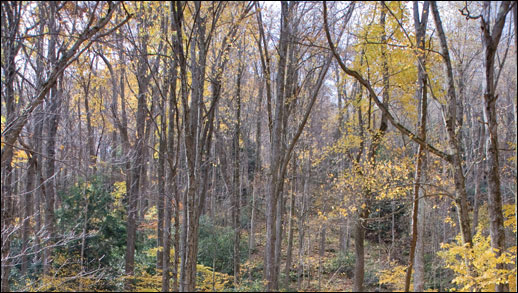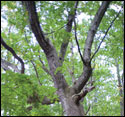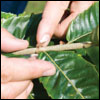|
Can Trees Save the Bay?
December 2009 • Volume 8, Number 4

JACK GREER

Nancy Ailes is making the rounds, checking out forests and fields she's been trying to save for nearly a decade. This part of West Virginia, nestled in the Potomac River watershed, is within striking distance of the highly populated Eastern seaboard. With development looming, she is trying to convince farmers and other landowners to give up their development rights to ensure the future of this rural landscape. How well she, and others like her, succeed in saving forests could have a big impact on Chesapeake Bay restoration. more . . .
 |
As Bay restoration deadlines loom, the push is on to save forests. more . . . |
 |
A new report lays out innovative uses for sediments dredged from the Baltimore Harbor channel. more . . . |
 |
Research funding & fellowship deadlines from Maryland Sea Grant.
more . . . |

American chestnut trees began dying from a blight in the early 1900s. By the 1920s and 30s most of the chestnuts in U.S. forests were gone. Researchers still hope to bring them back. more . . .
Online Feature

Award-winning author and journalist Tom Horton talks about a thorny issue facing the Bay watershed in the 21st century. more . . . |